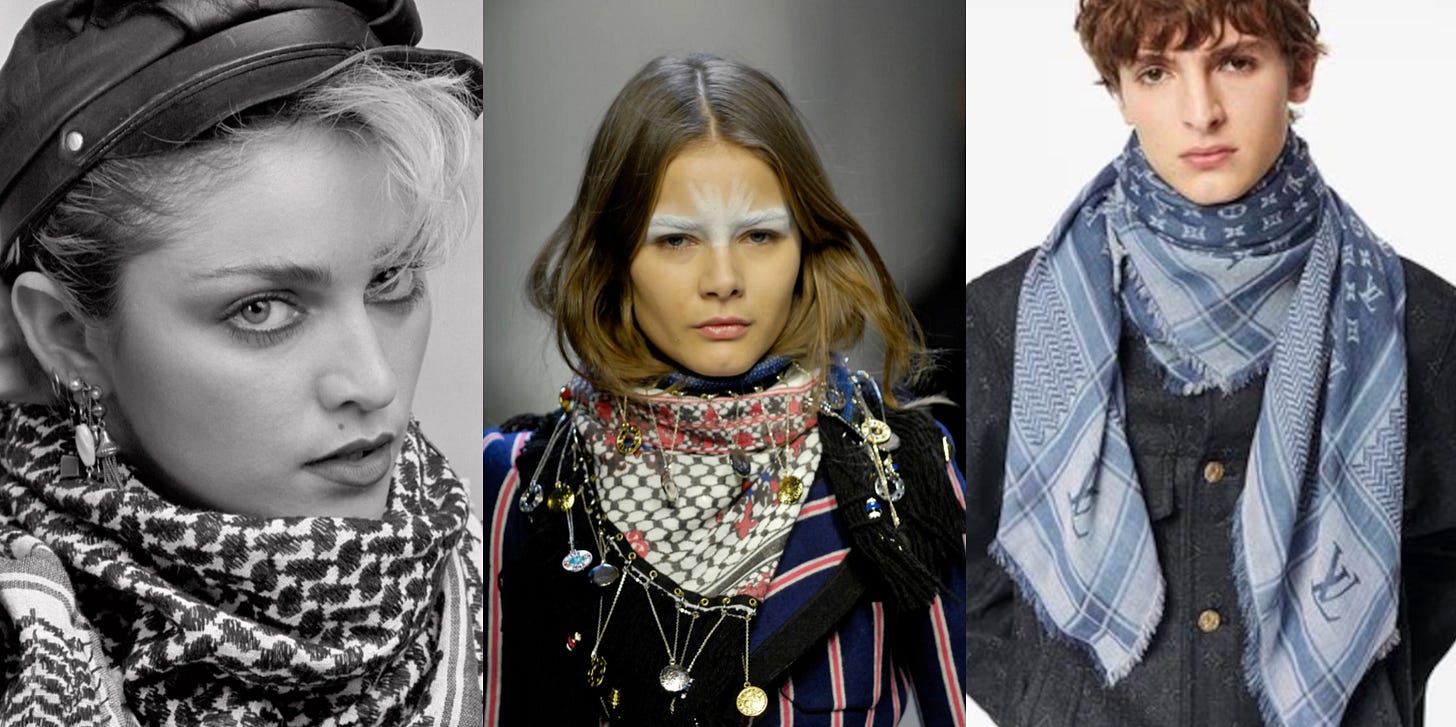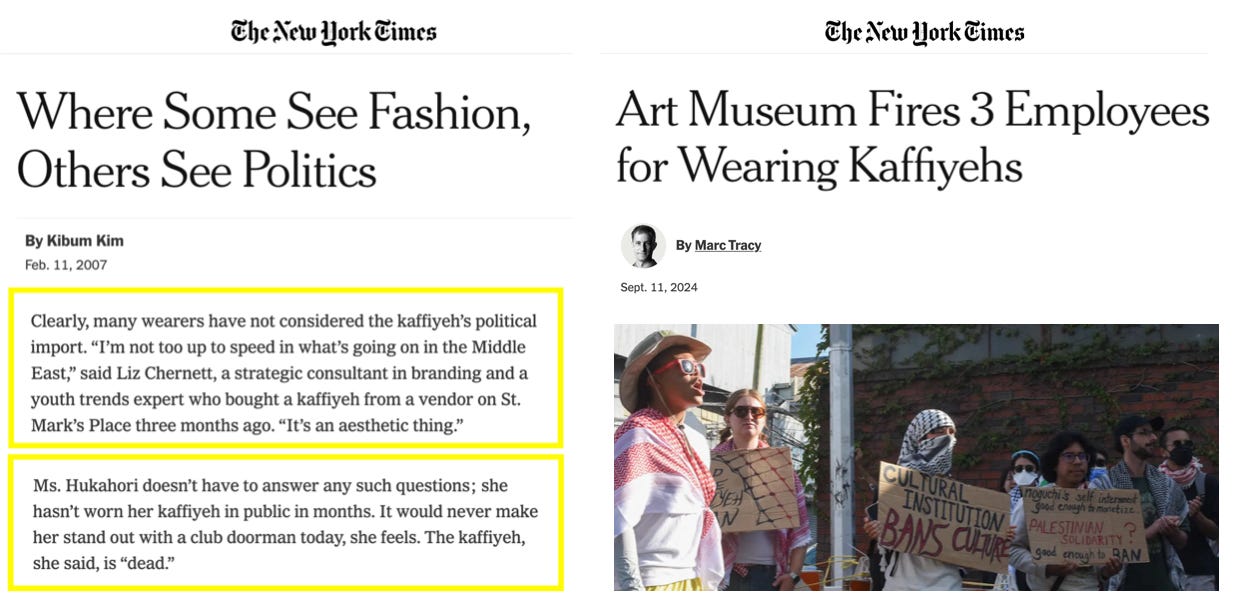This week, before a UN inquiry confirmed that Israel is committing genocide in Gaza, Javier Bardem walked the Emmys red carpet wearing a keffiyeh while advocating for Palestine. I think this patterned piece of cloth is one of the most fascinating fashion objects in the world. The keffiyeh’s potent political symbolism was adopted by American anti-war protestors in the 1960s and has managed to withstand cultural dilution through the years, despite references by everyone from Madonna (1982) to Balenciaga (2007), and Vampire Weekend (2008) to Louis Vuitton (2021).
An incredible New York Times article from 2007 quoted hipsters saying things like, “I’m not too up to speed in what’s going on in the Middle East…It’s an aesthetic thing,” and claiming that the trend of wearing a keffiyeh is “dead.” And yet, nearly 20 years later, it’s still ‘alive’ enough today to warrant being banned in Australian parlaiment, German schools, and New York museums.
In 2014, for an assignment in my graduate school program, I had to select any designed object and complete a thorough historiography. It was the autumn immediately following the 2014 Gaza Conflict, and I chose to study the keffiyeh. Since then, I’ve been quoted on the topic by journalists from The Guardian, Reuters, and Grazia. But the full story is far too complex to capture in a short article. So I thought it’d be interesting to serialize the entire paper.1
‘The Sociopolitical History of the Keffiyeh’ will be published here in 8 parts. In case you’re not interested at all — I’ve organized this so it’s part of a separate “section” of the newsletter called “Deep Dives,” which allows you to unsubscribe from only the ‘Deep Dives’ section (but please don’t unsub from the entire newsletter lol 🥹). Finally, a forewarning — You’ll have to please forgive the formal academic tone of this writing! I don’t think I’ll have time to make edits to help with this, but will try if/when I can.
Introduction
The traditional keffiyeh2 is ‘a large square head cloth […] held in place by a circlet of heavy twisted black cord of silk thread (aqal)’, as seen in Figure 1.3 Throughout the Middle Eastern region, the head cloth exists in a variety of incarnations that include a range of alternative colors and fabrics. However, this paper will focus on the Palestinian keffiyeh, of black-and-white checkered cotton, as a class of objects that has developed unique sociopolitical associations [Figures 2 and 3]. The various design changes that have occurred in the Palestinian keffiyeh’s development as a transnational object, particularly between the years 1967 and 2007, will be examined in an attempt to understand how a piece of standard Middle Eastern headwear became a stylish accessory in the West.4
While the current historiography provides a sociological and anthropological analysis of the keffiyeh, it neglects to consider the critical implications of design change. Any modifications that have occurred are dismissed by the literature as unintentional consequences of its adoption and commoditization by Westerners. However, this is an oversimplified conception of the keffiyeh as a designed object. By tracing change more carefully, we can appreciate that Palestinians were involved in much of the keffiyeh’s evolution.
Although the most visible changes to the keffiyeh occurred roughly between the years 1967 and 2007, it is necessary to first understand the origins of the black-and-white Palestinian keffiyeh as it was defined by the 1960s. After establishing the keffiyeh’s embodiment of nationalist values, I will examine its movement into the international sphere of consumption through the lens of design change.
Next: The Nationalized Keffiyeh
Note: Full bibliography (including image sources) available here
If you want the cliff notes first, this Instagram post covers the highlights.
Also referred to in the literature as kufiya, kufiyya, kuffiyeh, kafiyya, and kaffiyeh. For purposes of clarity I will be utilizing only the spelling keffiyeh in this paper. Other variants used in quoted texts will be thus replaced as [keffiyeh].
Yedida Kalfon Stillman, Arab Dress from the Dawn of Islam to Modern Times: A Short History, ed. by Norman A. Stillman, Themes in Islamic Studies (Leiden, The Netherlands: Koninklijke Brill NV, 2000), p. 171.
I acknowledge that ‘the West’ has been definitively established as a problematic term. Nevertheless, for matters of simplicity, I will be using this vocabulary to reference North America and Europe in this paper.





